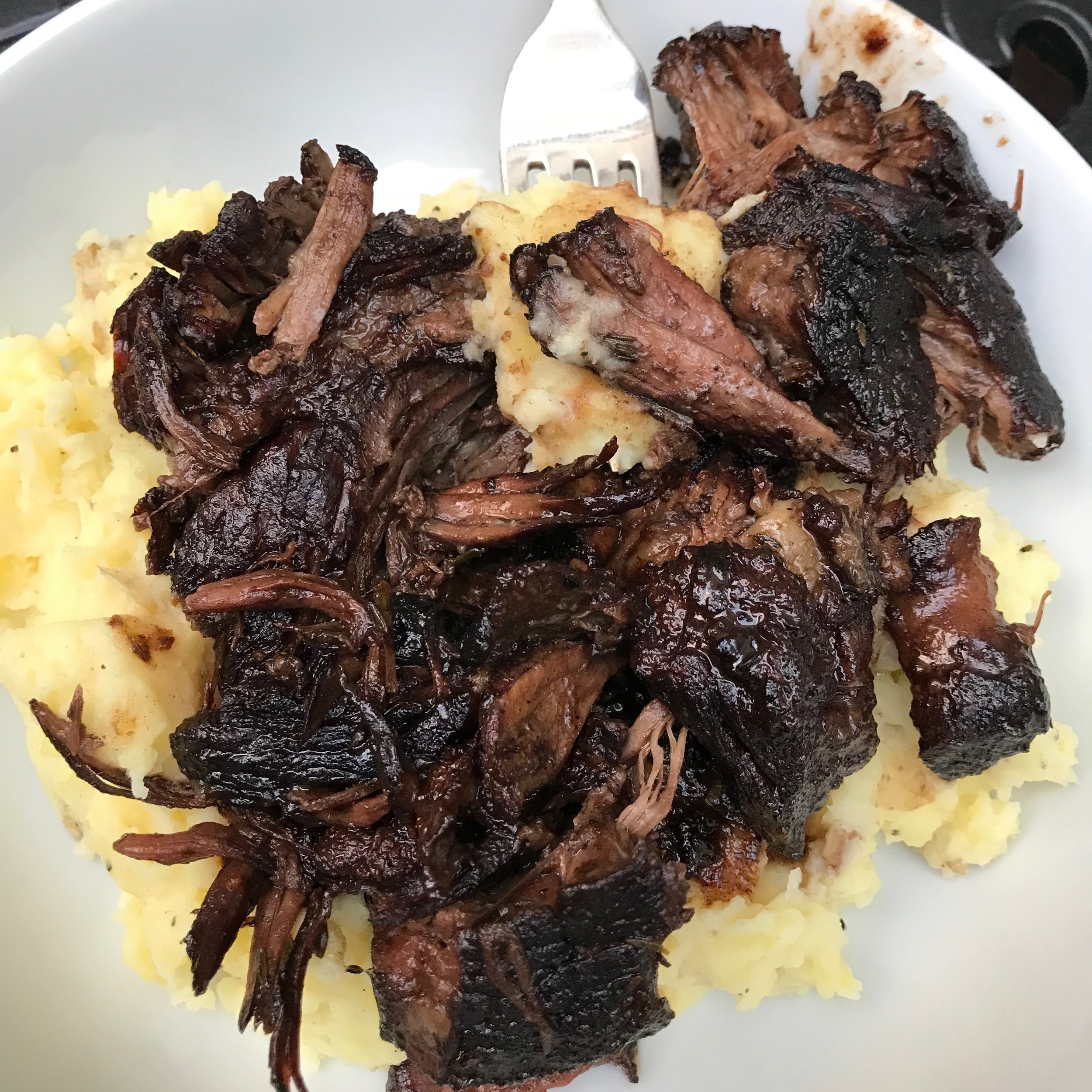Polar Vortex Stew
Suzanne Pollak
Bundle up! No need to lose your cool…
Want to warm everyone around you, make the house smell amazing, and have something useful (but still easy) to do when you cannot leave the house? Providing you have the ingredients on hand, this stew is soul-satisfying because the flavor is more than just meat . We use a smoked ham hock and bones from the meat to extract even more deliciousness.
Ingredients:
3 pounds beef shank with bone
1 - 1.5 pound smoked pork hock
2 - 3 tablespoons olive oil
2 cups wine - white, red or a mixture
3 cups water or stock
1 large onion, peeled and cut in half
8 whole cloves
4 garlic cloves, peeled
a sprig of bay, or 6 to 8 leaves
a couple sprigs fresh thyme
4 carrots, cut in chunks
4 celery stalks, cut into 3“ pieces
kosher salt
black peppercorns
Directions:
Cut the beef into large pieces, trimming off some of the fat.
Heat olive oil in a Dutch oven or casserole and cook the pork hock until lightly brown. Remove the hock. Put the beef pieces into the hot oil, searing on two sides. Add the bones from the meat and brown.
Deglaze the pot with a little wine. Add the rest of the wine, the meat, ham hock and meat bones and enough water or stock to cover the meat.
Stick the onion haves with cloves and put in the pot along with the garlic, bay leaves, thyme and celery. Season with salt — not too much because the ham hock will add salt to the stew.
Bring to a simmer and cook on stove top over low heat for four hours. Alternatively cook in a 250 F oven.
Taste for salt and pepper. Remove ham hock and take off any bits of pork and add to the stew.
Serve with mashed potatoes, thick slices of toasted bread, or a pasta stirred into the sauce before serving.








